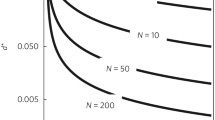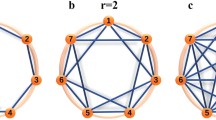Summary
Limited dispersal is often thought to facilitate the evolution of altruism by increasing the degree of relatedness among interacting individuals. Limited dispersal can have additional effects, however, such as local population regulation, that inhibits the evolution of altruism. Many models of structured populations assume that a viscous stage of the life cycle alternates with a global mixing stage, which allows the advantages of interactions among close relatives without the disadvantages of local population regulation. Here we analyse a computer simulation model of ‘pure’ population viscosity, in which offspring are always deposited close to parents and no global mixing stage exists. As expected, limited dispersal generates a high coefficient of relatedness among interacting individuals. Patches of altruists, however, are unable to ‘export’ their productivity to other regions of the landscape and are easily invaded by selfish types from neighbouring patches. Unlike models of alternating viscosity, in which high relatedness and local population regulation can be decoupled, these two opposing effects are inextricably linked in purely viscous populations, which therefore are not conducive to the evolution of altruistic traits.
Similar content being viewed by others
References
Axelrod, R. and Hamilton, W. D. (1981) The evolution of cooperation.Science 211, 1390–6.
Boyd, R. (1982) Density dependent mortality and the evolution of social behavior.Anim. Behav. 30, 972–82.
Boyd, R. and Richerson, P. J. (1990) Group selection among alternative evolutionarily stable strategies.J. Theor. Biol.
Charlesworth, B. (1979) A note on the evolution of altruism in structured demes.Am. Nat. 113, 601–5.
Crow, J. F. and Aoki, K. (1984) Group selection for a polygenic behavioral trait: a differential proliferation model.Proc. Nat. Acad. Sci. 79, 2628–31.
Falconer, D. S. (1981)Introduction to Quantitative Genetics. 2nd edn. Longman, London.
Goodnight, K. (1992) Kin selection in a structured population.Am. Nat. (in press)
Govindaraju, D. R. (1988) Mating systems and the opportunity for group selection in plants.Evolutionary Trends in Plants 2. pp. 99–106.
Hamilton, W. D. (1964) The genetical evolution of social behavior, I and II.J. Theor. Biol. 7, 1–52.
Harpending, H. C. and Roger, A. R. (1987) On Wright's mechanism for intergroup selection.J. Theor. Biol. 127, 51–61.
Kelly, J. K. (1992a) The evolution of altruism in density regulated populations.J. Theor. Biol. (in press).
Kelly, J. K. (1992b) Restricted migration and the evolution of altruism.Evolution (in press).
McCauley, D. E., Wade, M. J., Breden, F. J. and Wohltman, M. (1988) Spatial and temporal variation in group relatedness: evidence from the imported willow leaf beetle.Evolution 42, 184–92.
Michod, R. E. (1982) The theory of kin selection.Ann. Rev. Ecol. Syst. 13, 23–56.
Queller, D. C. (1985) Kinship, reciprocity and synergism in the evolution of social behavior.Nature 318, 366–7.
Pollock, G. B. (1983) Population viscosity and kin selection.Am. Nat. 122, 817–29.
Rogers, A. R. (1990) Group selection by selective emigration: the effects of migration and kin structure.Am. Nat. 135, 398–413.
Schall, B. A. (1975) Population structure and local differentiation inLiatris cylindracea.Am. Nat. 109, 511–28.
Seger, J. (1976) Evolution of responses to relative homozygosity.Nature 262, 578–80.
Taylor, P. D. (1992) Altruism in viscous populations — an inclusive fitness model.Evol. Ecol. 6, 352–6.
Turner, M. E., Stephens, J. C. and Anderson, W. W. (1982) Homozygosity and patch structure in plant populations as a result of nearest-neighbor pollination.Proc. Natl. Acad. Sci. 79, 203–7.
Wade, M. J. (1985) Soft selection, hard selection, kin selection and group selection.Am. Nat. 125, 61–74.
Wilson, D. S. (1977) Structured demes and the evolution of group advantageous traits.Am. Nat. 111, 157–85.
Wilson, D. S. (1979) Structured demes and trait-group variation.Am. Nat. 113, 606–10.
Wilson, D. S. (1980) The natural selection of populations and communities. Menlo Park: Benjamin Cummings.
Wilson, D. S. (1990) Weak altruism, strong group selection.Oikos 59, 135–40.
Wilson, D. S. and Colwell, R. K. (1981) Evolution of sex ratio in structured demes.Evolution 35, 882–97.
Wilson, J. B. (1987) Group selection in plant populationsTheor. Appl. Genet., 493–502.
Author information
Authors and Affiliations
Rights and permissions
About this article
Cite this article
Wilson, D.S., Pollock, G.B. & Dugatkin, L.A. Can altruism evolve in purely viscous populations?. Evol Ecol 6, 331–341 (1992). https://doi.org/10.1007/BF02270969
Issue Date:
DOI: https://doi.org/10.1007/BF02270969




